Freight shipping solar panels can be difficult. Solar panels are both heavy and delicate, and these attributes can make transporting them a challenge even for skilled freight partners. Despite the challenges, moving solar panels is essential as demand for alternative, clean energy surges.
Solar panels often require oversize shipping services. Additionally, careful packaging is required for transport. Freight shipping solar panels can involve protecting the fragile cargo from damage during transit, as well as ensuring careful and on-time delivery.
It takes the right freight partner to ensure solar panels are transported safely. No matter whether you’re just looking to cut ties with your electric company or you’re seeking to take advantage of incentives or rebate programs, there are a number of reasons why you might be interested in getting solar panels to your home or business. Let’s look more at the specifics of freight shipping solar panels and how to choose the right transportation services partner.
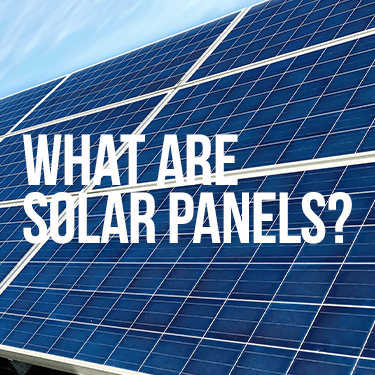
In the most simple terms, solar panels are special devices that are used to turn light from the sun into electricity. You’ll find that solar panels can be used in many different situations, including everything from powering satellites orbiting the Earth to providing electricity for remote cabins.
Despite the diverse applications, solar equipment might be best known for producing solar power for both commercial and residential solar electric systems. You might see solar panels lining the roof of a home or business. In fact, you’ll find that the average roof has more than enough room for panels to supply all of the building’s power needs. Power can even be stored to provide electricity at night, on cloudy days, or during inclement weather.
Solar panels take light and energy from the sun and turn it into the kind of energy that can power electrical loads. Solar panels are made from solar cells. Solar cells are made from elements like silicon, phosphorus, and boron. These chemicals work together to create energy through the Photovoltaic Effect. The phosphorus in the panel creates a negative charge. The boron in the panel creates a positive charge. This allows the cells to absorb photons from the sun. The cells then release energy by pulling the electrons into a directional current, which can be used for electricity.
The science behind solar energy might be intricate and technical, but that doesn’t mean using solar panels is complicated. Solar panels are an increasingly common way of powering residences and commercial buildings across the United States, according to data from the National Renewable Energy Laboratory. Right now California leads the nation with the most solar power generated, but Texas, Florida, Nevada, and North Carolina aren’t far behind.
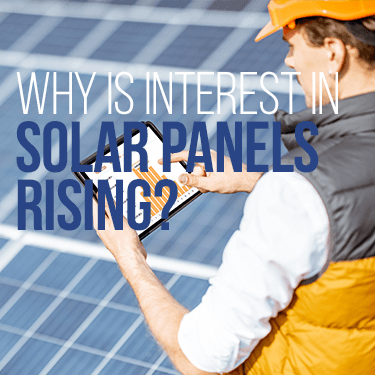
If you’re into clean energy, you’re likely into solar panels. Interest in solar panels is rising for many reasons. Some of these reasons include:
No matter why you might be interested in solar panels, it is important to know that transporting these delicate objects is an important consideration. Let’s look more at solar panel shipping.
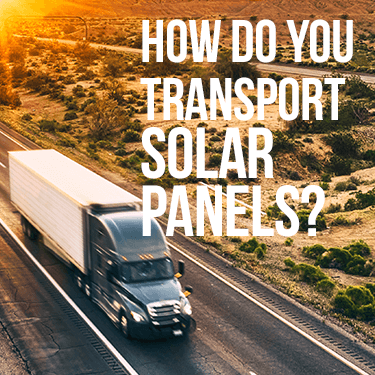
In most cases, solar panels are transported by freight shipping. This might include air, sea, rail, or truck freight shipping. The method of freight shipping selected depends on pick-up location and destination. For example, solar panels manufactured in Tawain might move via ocean freight to Long Beach, California, then travel via full truckload shipping to a distributor’s warehouse in Miami, Florida.
Large solar panels, like those used on solar farms, might require oversize freight shipping services. It is important to know the dimensions of your panels when speaking to your freight broker or carrier partner. Smaller solar panels, like those used in residential settings, can often be palletized and shipped in a dry van.
USA Truckload Shipping, powered by R+L Global Logistics, focuses on delivering on LTL and FTL freight solutions. You might rely on our services anytime you need to move solar panels by truck. Because solar panels are so delicate, special care must be taken during transport by truck. This means freight shipping solar panels comes with several considerations.
The most important consideration to take when moving solar panels is the packaging process. The panels must be adequately packaged to prevent damage along the way during transport. Solar panels are expensive and quite valuable, so keeping them protected during the shipping process is a must.
Solar panels are typically stacked in a box or crate prior to shipping. They can be stacked horizontally or vertically, as to how they are placed in the box might depend on the panel’s dimensions. It is important to use cushioned separators between each unit in the box. You might also consider using corner cushions on each unit before placing them in the box.
The separators are especially important, as improper packaging can lead to product damage. Solar panels stacked horizontally without the right separators or cushion can put stress on the panel, leading to microcracks and other damages.
From there, the box or crate should be affixed to a shipping pallet. Shipping pallets are basically platforms designed to hold freight during transport and storage. Pallets come in uniform sizes, the most common being 40-inches by 48-inches. You might be able to affix 30 panels on a pallet, contingent on the size of the panels. A standard pallet can hold as much as 4,000 lbs and be stacked up to 6-feet tall. A pallet of solar panels is generally banded and wrapped for safe transport.
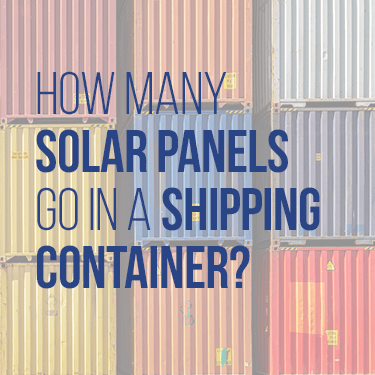
Need to know how many panels will fit in a full truckload? Let’s look at dry van dimensions and do some math.
Dry vans for truckload shipping typically measures about 53-feet in length, 8.5-feet in width, and 9-feet in height. These dimensions mean that a full truckload can hold about 26 standard-size pallets or about 45,000 lbs. If 30 solar panels can be loaded on a pallet, that means up to 780 solar panels might encompass a full truckload shipment.
Need to move a smaller quantity of solar panels? You might opt for LTL, short for less than truckload, shipping. A typical LTL shipment weights more than 150 lbs but less than 15,000 lbs and is your best option when only moving a few pallets of goods.
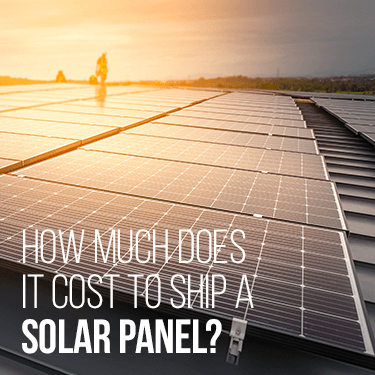
While the packaging is an important consideration when transporting solar panels, so are shipping costs. How much does it cost to ship a solar panel? The answer is “it depends.”
In most cases, the cost of freight shipping solar panels depends on the dimensions of the load, the pick-up location, the delivery destination, and additional services required.
With these factors in mind, you might find that it will only cost a few hundred dollars to move a few pallets of solar panels from a port in Long Beach to a warehouse at LAX; it might cost a few thousand dollars to move a full truckload of solar panels from warehouse at LAX to a major construction site in Colorado.
The best way to determine the cost of shipping solar panels is to get a freight rate quote. USA Truckload Shipping, powered by R+L Global Logistics, has friendly agents standing by who are ready to provide a real-time freight shipping quote. This means you’ll know how much it costs to ship your panels with a guaranteed quote.
Freight shipping solar panels is a process essential to getting these in-demand products into the hands of those who need them most. No matter whether you’re moving a full truckload of panels for a big installation or just a few pallets, you need the right freight partner to get it there safely and on-time.
Are you ready to see how USA Truckload Shipping, powered by R+L Global Logistics can be your strategic transportation ally? Our years of service, carrier network, and expertise in moving delicate and high-value goods make us a premier partner when it comes to freight shipping solar panels.
You’ll find our service offerings are ready to meet your freight shipping need no matter what you need to move. Count on R+L Global Logistics when you need:
Reach out to one of our friendly freight agents now by calling (868) 353-7178 now. We’ll likely be able to provide a spot quote on the phone, saving you time and hassle.
R+L Global Logistics
315 NE 14th St., Ocala, FL 34470